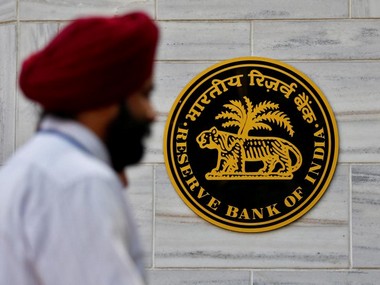Monetary policy outcomes have become more predictable these days and normally market expectations are met. Therefore, there has been a ‘lowering bias’ for the repo rate under conditions of virtually unchanged inflation where projections are within the 4 percent mark. The third successive reduction in the repo rate was on the cards as long as the forecasts for the two halves were less than 4 percent. The clinching argument for a rate cut was the release of the gross domestic product (GDP) numbers for FY19 which came lower than expected. The logical response is to lower rates from the monetary side and watch the subsequent reactions of the market. Let us look at the inflation assumptions. The models used look at the numbers which are within the targeted range with a slight lower revision being made for H2. This means that the monsoon will be normal and there will be no pressure coming from the food items in the Consumer Price Index (CPI).
The trend in the last three months has been that food inflation has started increasing from negative numbers to positive, but is unlikely to become prodigious to push the headline number up. Further, fuel inflation has been increasing and the assumption made by the Reserve Bank of India (RBI) here is that oil prices are unlikely to increase in the next couple of months. This is comforting because it was a concern a couple of months ago.
These lower inflation forecasts have contributed to the change in stance from neutral to accommodative. Therefore, what one can take from the change in the stance is that the RBI does not expect inflation to move up and therefore, there can be further rate cuts, but definitely no hikes as of now. [caption id=“attachment_4499583” align=“alignleft” width=“380”] Representational image. Reuters.[/caption] The RBI has been managing liquidity on a proactive basis as can be seen from the continuous auctions of open market operations (OMOs) that ensure that durable liquidity is injected while the liquidity adjustment facility (LAF) window provides temporary finance on a daily basis. This has worked well so far as seen from the recent development of liquidity turning surplus. The GDP forecast for FY20 has been lowered from 7.2 percent to 7 percent. This is important because there has been speculation about two things. First, whether or not the government will provide a stimulus in the Budget? The answer appears to be a ‘no’ as a lower forecast implies that the Fiscal Responsibility and Budget Management (FRBM) path is more likely to be pursued. Second, there is also an admission that while the interest rates have been lowered for the third time this yea, it will not translate into higher GDP growth. As an extension, it can also be said that investment, especially from the private sector, will remain largely unchanged. This sounds reasonable given that the financial sector is still in a phase of flux where the non-performing assets (NPA) issue is getting resolved gradually and the NBFC crisis is still being sorted out.
The overall policy thrust will be positive for the market. The bond yields will moderate further and remain less than 7 percent. However, it needs to be seen if the banks will lower deposit rates in the present context where growth has been slower last year mainly due to low returns. Besides the alignment with small savings interest rates is missing presently which makes it difficult for banks to lower their deposit rates across the board.
Lending rates would probably come down in moderation and the RBI has highlighted that the WALR (weighted average lending rate) has moved in consonance with the policy rate changes. But such changes in rates may not really lead to an increase in investment which can stimulate growth as the environment is not congenial for the same. Rate cuts work on investment decisions with a lag when opportunities come up and it is here that the government should take the lead and ascertain the causes of stagnation. It is good that the prime minister would be monitoring two specific committees which would be addressing issues of growth, employment, consumption, investment etc. Therefore, the efficacy of these rate cuts witnessed over the last 4 months or so can be gauged with a lag and requires considerable support from the policy front. Can we expect more rate cuts in the year? The answer is in the affirmative direction but the quantum is hard to project. If 75 bps cut does not work, there is no assurance that another 50 bps will help revive the economy even if inflation remains benign which is the strong underlying assumption. This is the basic problem with the monetary policy which has witnessed during the financial crisis in the US when the rates were brought down close to zero. How much further can the central bank grow in its tryst to boost growth? It was at this stage that the Fed had to think of unconventional methods like quantitative easing (QE) which too had limitations in terms of fostering growth. A decade after the crisis, the US economic growth path is still uncertain. Quite clearly, the path to higher growth has to be a mix of various facets: lower interest rates, some fiscal action like tax cuts for consumption and investment, cash transfers, removal of policy bottlenecks in specific sectors like power, for example, etc. which will gradually uplift the economy. One has to be patient as this can take time and the road to the 8 percent growth mark appears to be quite long today going by the RBI revision of its forecast from 7.2 percent to 7 percent for FY20. (The writer is chief economist, CARE ratings)


)

)
)
)
)
)
)
)
)



